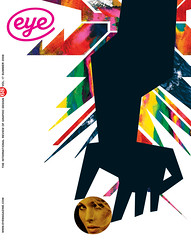Summer 2008
William Hall
Who cares about graphic design history?

William Hall comes from Sussex and graduated from Central Saint Martins in 1997.
Q1. What do you think is meant by ‘the canon of graphic design history’? For example: The Bauhaus? Beck’s Underground diagram? Alvin Lustig’s book covers? Swiss Modernism? George Lois’s Esquire covers? Wim Crouwel’s New Alphabet? Glaser’s ‘I [heart] NY’? Barney Bubbles? Ray Gun? Do you ever think about it, or buy design history publications?
A1. Though the items on your list are laudable, and I can see the attraction of compiling a list of unassailably strong work, it is not something I have contemplated. I don’t prioritise graphics over other forms of design when considering design history.
Q2. Does this kind of design history have relevance to what you do in your design practice?
A2. I am attracted to things that are functional, serious and visually pure. It doesn’t matter which realm they come from.
Q3. Where did you learn about design history (if at all)?
A3. The usual places: school, college, magazines. I’ve made architectural pilgrimages, too, to Vicenza to tour Andrea Palladio’s work, for example.
Q4. Does history have any relevance to the new technology and techniques you’ve had to master in your work?
A4. Most of my work is in print. The new technologies that I use have made things quicker and simpler, but they haven’t changed the creative process.
Q5. If you were in charge of a design education programme, what aspects of design history (if any) would you teach to your students?
A5. I wouldn’t go out of my way to show them great graphic design specifically, but I do believe that it can be useful to hold up examples of good design regardless of the discipline. It is possible to explore the fundamental principles of good or creative design by looking at Louis Kahn, Dieter Rams, Hans Wegner or ‘Capability’ Brown, as well as Harry Beck and David Carson.
First published in Eye no. 68 vol. 17 2008
Eye is the world’s most beautiful and collectable graphic design journal, published quarterly for professional designers, students and anyone interested in critical, informed writing about graphic design and visual culture. It is available from all good design bookshops and online at the Eye shop, where you can buy subscriptions and single issues.

